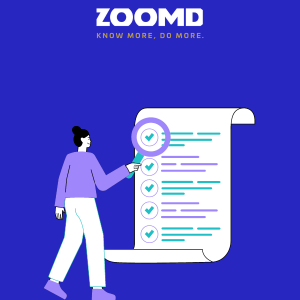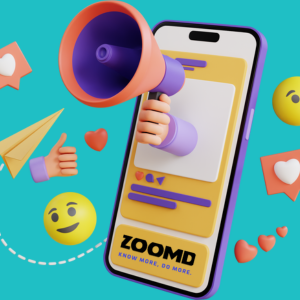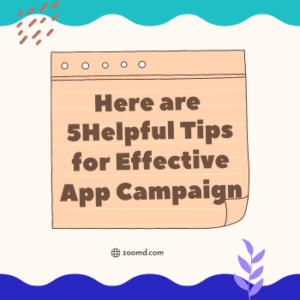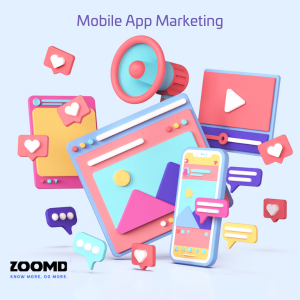If you have a mobile app that you want to promote and grow, you need to have a solid mobile app marketing plan. Mobile app marketing is the process of reaching and engaging your target audience through various channels and platforms, such as social media, search engines, ad networks, and programmatic advertising.
But how do you choose the right platforms for your mobile app marketing? And how do you create a marketing plan that suits your goals and budget? In this blog post, we will answer these questions and help you get started with your mobile app marketing strategy.
What are the platforms for mobile app marketing?
There are many platforms that you can use to market your mobile app, depending on your objectives, target audience, and budget. Here are some of the most common ones:
– Social media: Social media platforms like Facebook, Instagram, Twitter, TikTok, and Snapchat allow you to reach a large and diverse audience with various ad formats, such as video ads, carousel ads, story ads, and more. You can also use social media to create organic content, such as posts, stories, reels, and live streams, to build awareness and engagement with your app. Social media marketing is ideal for creating brand awareness, driving app installs, and fostering loyalty and retention.
– Search engines: Search engines like Google and Bing allow you to bid on keywords that are relevant to your app and show your ads to users who are searching for them. You can also use search engine optimization (SEO) techniques to rank your app higher in the organic search results. Search engine marketing is ideal for driving app installs, increasing app visibility, and generating qualified leads.
– Ad networks: Ad networks are platforms that connect advertisers with publishers who have ad space on their websites or apps. You can use ad networks to display your ads on various websites or apps that are related to your niche or target audience. Like all media channels, ad networks also offer the use of various ad formats, such as banner ads, interstitial ads, native ads, and more. Meaning you don’t have to costume create new ad units for wide distribution. Adding ad networks as a source into your media mix is ideal for reaching a large and relevant audience, driving app installs, and increasing app revenue, mainly as they are performance-based channels making it also very cost-effective for your media plan.
– Programmatic advertising: Programmatic advertising is the process of buying and selling ad space using automated software and algorithms, such as a DSP. A DSP is an easy-to-use, highly-targeted platform to display your ads on various websites or apps that match your criteria, such as location, device type, demographics, interests, and more. Using Zoomd DSP, you can also target an audience based on location, which is great if you also have offline assets that people visit. Programmatic advertising offers various ad formats, such as video ads, rich media ads, rewarded ads, and more. Programmatic advertising is ideal for reaching a highly targeted and engaged audience, driving app installs, and optimizing app performance.
How to create a mobile app marketing plan?
Now that you know the different platforms for mobile app marketing, how do you create a marketing plan that works for your app? Here are some steps that you can follow:
– Define your goals: What do you want to achieve with your mobile app marketing? Do you want to increase app downloads, user retention, app revenue, or something else? Having clear and measurable goals will help you choose the right platforms and strategies for your app marketing. It doesn’t have to be just one goal, or it can be one goal at a time. When launching a new app, you first want to reach a big database of users, regardless of the ROI they produce. So a goal of high volume of installs, or registrations can be the first target you focus. Once you have enough users on your app, it’s time to proceed to another goal which is to increase user retention, which will require a different plan or and approach. For each goal, a different plan is required along with which media channels to use and what creative to produce.
– Identify your target audience: Who are the users that you want to reach with your mobile app marketing? What are their demographics, preferences, behaviors, pain points, and motivations? Knowing your target audience will help you create relevant and personalized messages and offers for them.
– Choose your platforms: Based on your goals and target audience, choose the platforms that suit your mobile app marketing best. You can use one or more platforms depending on your budget and resources. For example, you can use social media to create brand awareness and loyalty, search engines to drive app installs and leads, ad networks to reach a large and relevant audience, and programmatic advertising to optimize your app performance.
– Create your content: Based on the platforms that you choose, create engaging and compelling content that showcases the value proposition of your app. You can use different types of content, such as videos, images, text, audio, and more, depending on the platform and the ad format that you use. Make sure that your content is clear, concise, and consistent across all platforms and channels.
– Set your budget: Based on your goals and the platforms that you choose, set a realistic and flexible budget for your mobile app marketing. You can use different methods to allocate your budget, such as cost per install (CPI), cost per action (CPA), cost per mille (CPM), and more, depending on the platform and the objective that you have.
– Track and measure your results: Based on your goals and the platforms that you use, track and measure the results of your mobile app marketing. You can use different tools and metrics to monitor and evaluate your performance, such as impressions, clicks, installs, conversions, retention, revenue, and more, depending on the platform and the objective that you have.
– Optimize and improve: Based on the results that you get, optimize and improve your mobile app marketing. You can use different techniques to test and refine your content, audience, budget, and strategy, such as A/B testing, split testing, multivariate testing, and more. Keep experimenting and learning from your data to achieve better outcomes.
Conclusion
A cohesive app marketing plan is a crucial part of growing and scaling your mobile app business. By choosing the right platforms and creating a solid marketing plan, you can reach and engage your target audience effectively. If you need help with your mobile app marketing, you can contact the experts Zoomd. With our vast global reach and different user acquisition technologies, you can be sure we can help you create and execute a successful mobile app marketing campaign.



